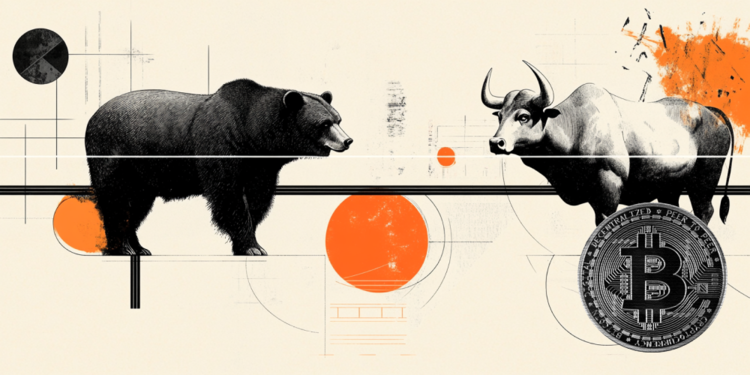Bitcoin has always fancied itself the digital heir to gold — the millennial philosopher’s stone that could turn fiat anxiety into fortune. But in the age of trade wars and tech dependencies, it’s acting less like gold and more like a hyper-leveraged teenager at a geopolitical rave — euphoric one minute, face-down in the volatility ditch the next.
Every escalation in the U.S.–China tariff crossfire has drawn blood in Bitcoin. The pattern is as perverse as it is poetic: when real gold flexes its old-world muscle, digital gold forgets its lines and faints. It’s as if the crypto crowd still wants to believe in Bitcoin as a hedge against chaos, but the chaos now is the trade structure that feeds its own speculative oxygen. The rare-earth chokehold — those tiny, obscure minerals that keep the AI servers humming and the EVs glowing — has become the pressure point where modern capitalism meets its own digital dependence. And Bitcoin, the supposed antidote to central-bank tyranny, suddenly looks like a sidecar attached to the same fragile machine.
This isn’t your grandfather’s Achilles heel — it’s America’s digital one. Trump 1.0 had the “Trump Put” — a kind of Pavlovian market rescue reflex whenever equities coughed. Trump 2.0’s market psychology is wired differently: it’s all about the tech-crypto complex that now is the market. The same feedback loops that once made the S&P 500 the pulse of confidence now run through AI clusters, crypto exchanges, and leveraged digital infrastructure.
The cross-pollination is staggering: OpenAI and Anthropic need Nvidia’s GPUs; Nvidia needs stable AI capex; Microsoft and Oracle bankroll the silicon dreams; Tether and Coinbase provide the shadow liquidity that keeps it all liquid — until it isn’t. This is capitalism’s new nervous system, an elegant web of dependencies masquerading as innovation. And if rare earths are the minerals that power the machinery, then Bitcoin has become the mood ring — its price volatility reflecting the system’s psychological state.
One can almost hear the ghosts of Marx and Lenin smirking from the afterlife, not because they were right about revolution, but because they understood the mathematics of fragility. Every era of concentrated capital eventually believes it has transcended its own physics — until a supply shock or a liquidity tremor exposes just how entangled the oligarchic networks have become. Profits remain privatized; losses are conveniently socialized, and the public is told it’s all for the greater macro good.
We are in that cycle again — the “AI-crypto-credit complex” as the new industrial trust. A world where leverage and laissez-faire have merged into a glittering superstructure of optimism. But beneath the neon lights, it’s the same old vulnerability — a chain of dependencies that can shatter if even one link (rare earths, Bitcoin liquidity, or AI funding) snaps under stress.
So yes, maybe investors should be watching Bitcoin, Nvidia, OpenAI, and the rest of the Liberty-coin circus more closely than Beijing’s next tariff headline. Because in this age of algorithmic reflexes and digital dependency, when Bitcoin sneezes, it’s not the miners who catch a cold — it’s the entire new capital order.

